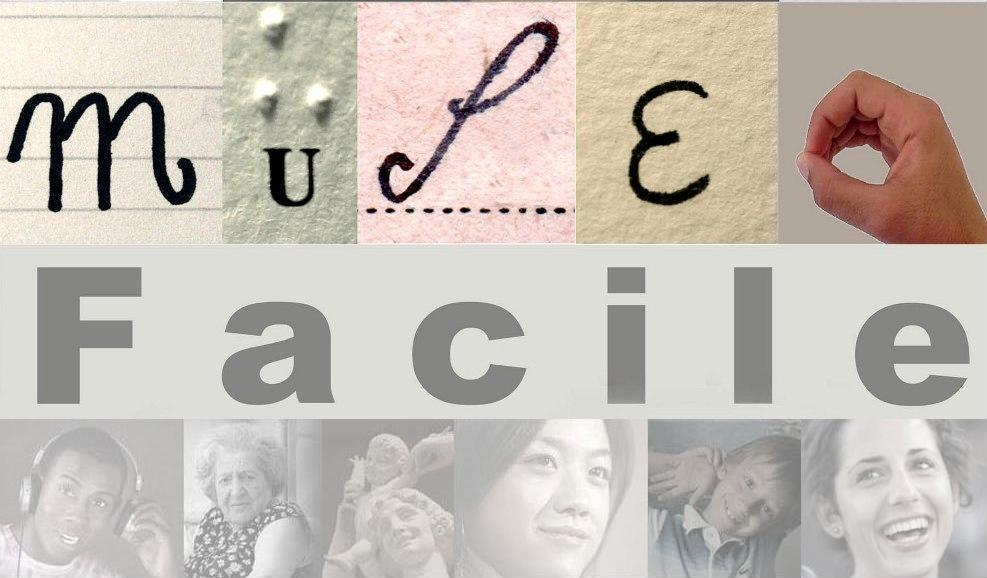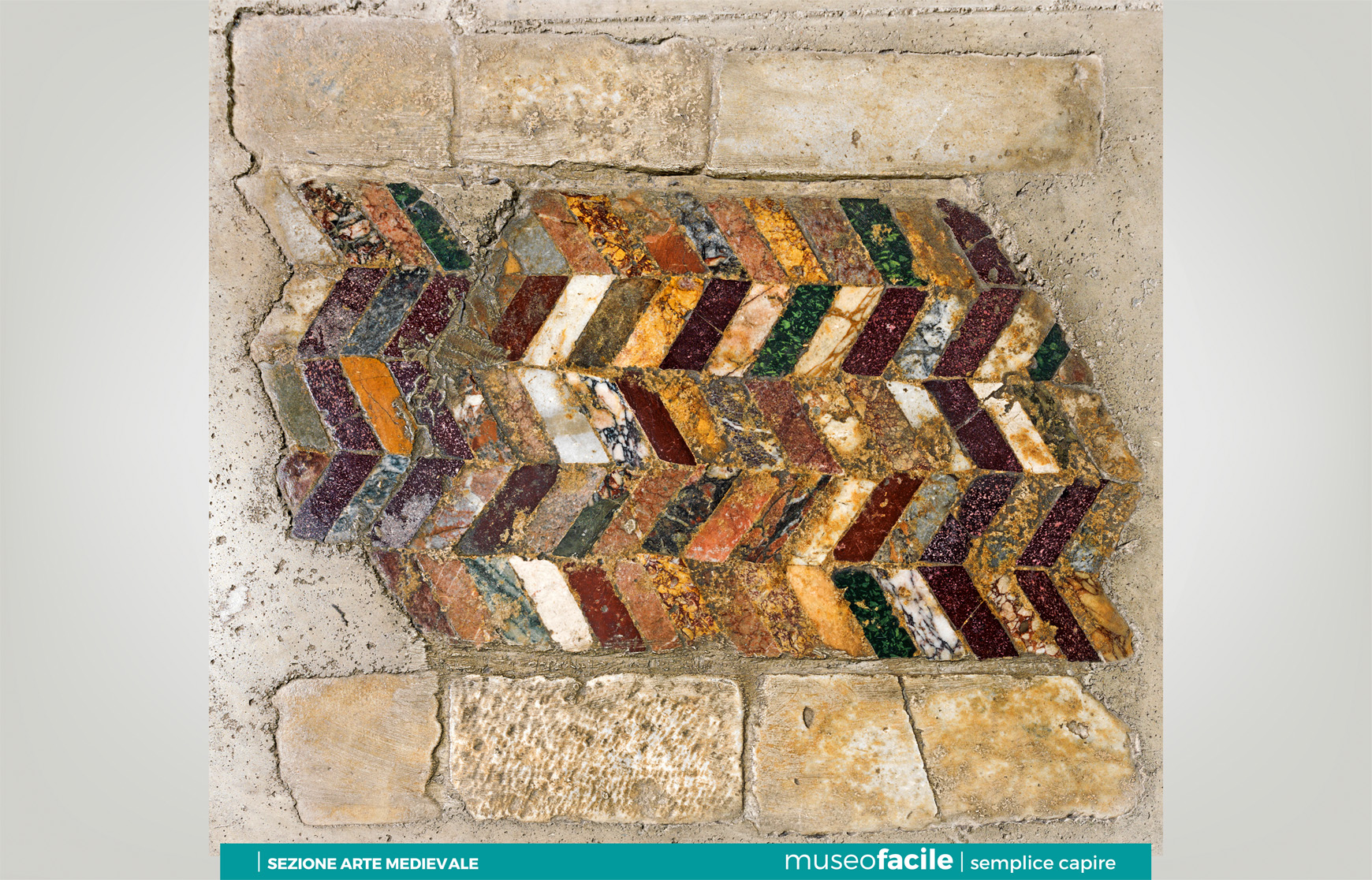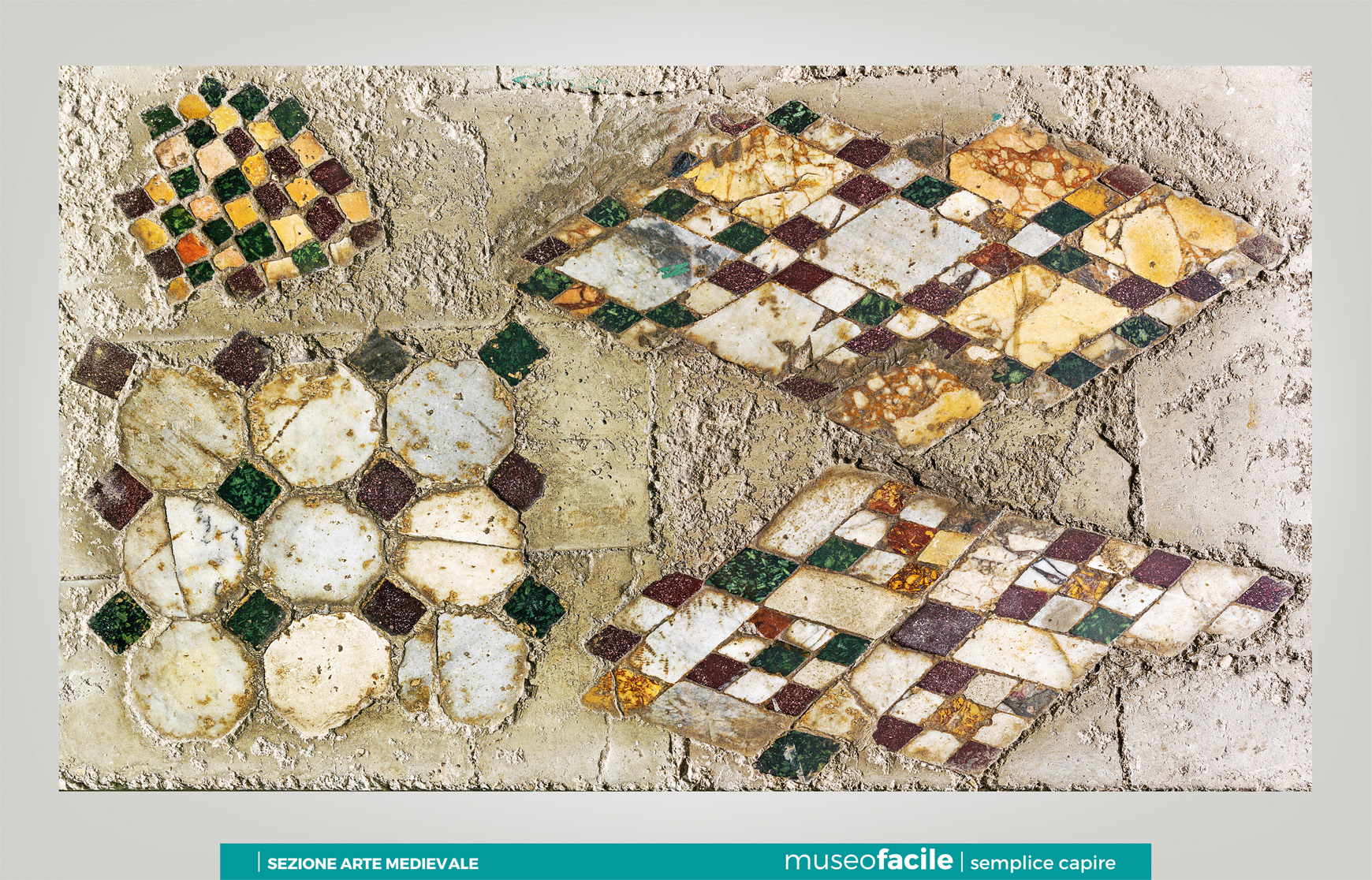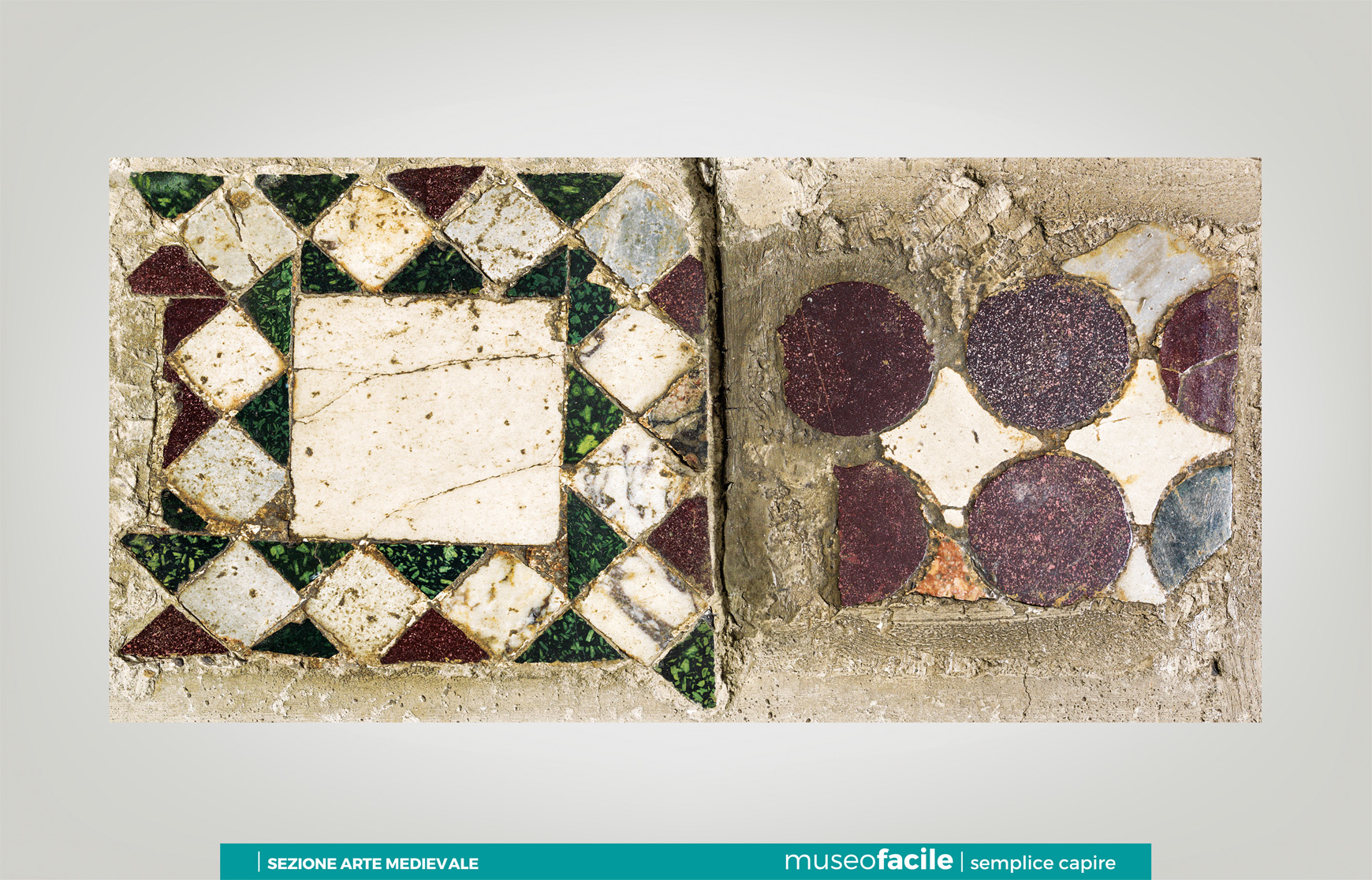Go to the photographs Go to the text Go to the fuller text Go to the QR CODE
PHOTOGRAPHS
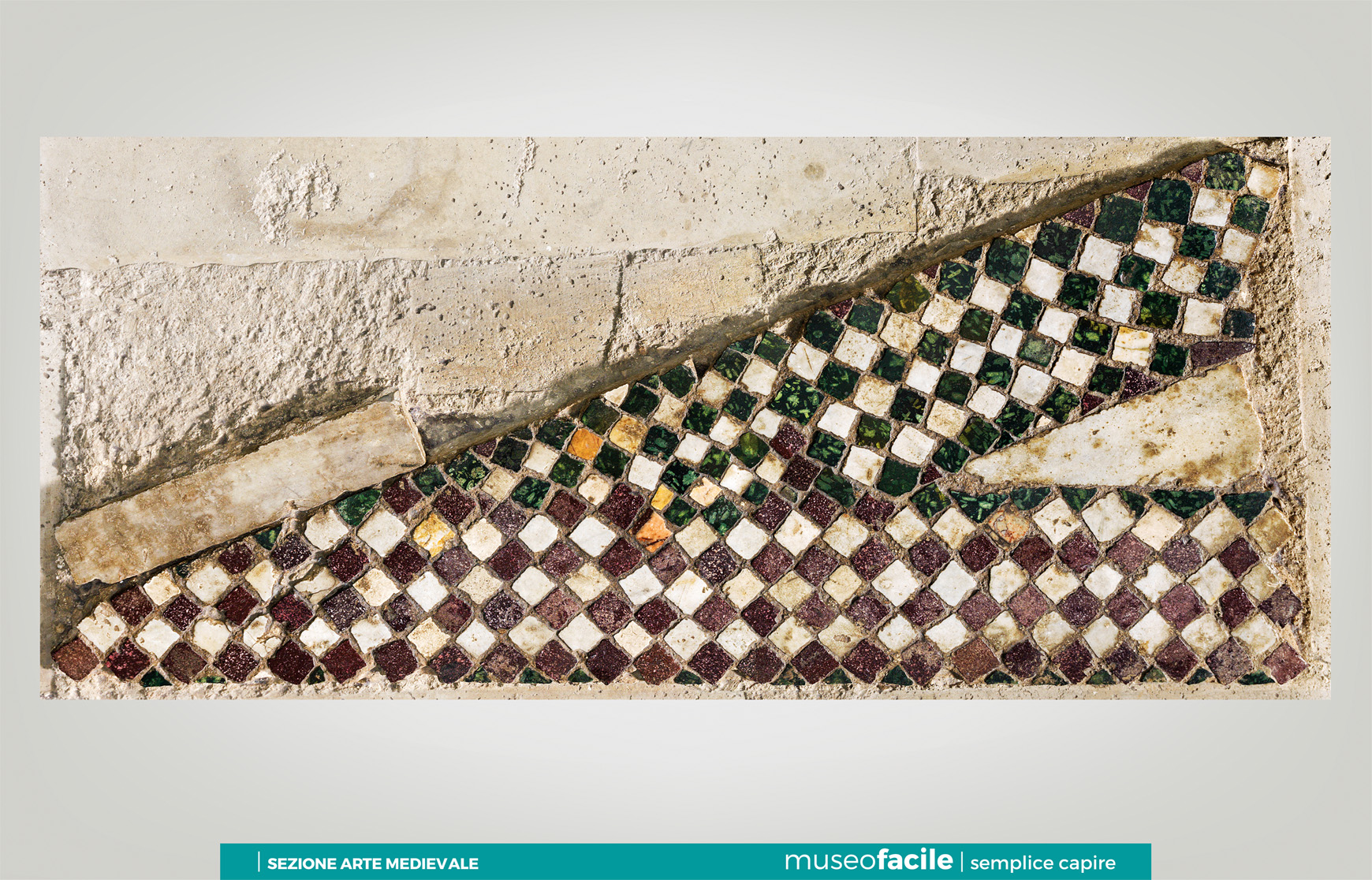
Pavement Fragment
Second Half of 11th Century
Polychrome Marbles
Location: Museum of Montecassino Abbey, Room of Desiderius, central room
Provenance: Montecassino, Abbey Church of Desiderius (1066-1071)
FULLER TEXT
Fragment with Checkered Patterns
This is the only surviving piece of the eastern portion of the nave, recovered after World War II. It formed part of a triangular motif that created an octagonal frame around an eight-pointed star.
It presents a simple checkerboard pattern made of red porphyry, green porphyry and white palombino tiles. There are also some pieces in giallo antica of Numidia.
The tesserae alternate chromatically: almost all red ones are found on one side of the triangle and almost all green ones on the other.
Fragments with Checkerboard and Geometric Patterns
The fragments are surviving pieces from some of the panels from Desiderius’ pavement that were recovered after World War II along with other fragments.
The simplest pattern is the checkerboard where we see alternating tesserae of green porphyry, giallo antico of Numidia and white palombino. Another pattern is composed of white marble and palombino octagons between which there are red and green porphyry squares. The other two pieces employ rhombus patterns. In one case there is a single marble tessera (in breccia gialla, giallo antico of Numidia, or white marble) framed by plaited ribbons in white marble, red and green porphyry, and giallo antico of Numidia. In the other instance, the rhombi create a checkerboard pattern (with white marble alternating with red and green porphyry, lumachella and broccatello), framed by white marble ribbons with red and green porphyry placed at their intersections.
Fragment with Herringbone Pattern
This fragment, recovered after the last World War, is part of what survives from Desiderius’ pavement.
This decorative pattern is an ancient one called opus spicatum, which in Latin means “work shaped like a blade of wheat” and can already be seen in Classical, Roman floors. This motif is widespread at Montecassino and as well as in other pavements where craftsmen from Desiderius’ campaign worked (Sant’Angelo in Formis, San Benedetto a Capua, Santa Maria Maggiore in Sant’Elia Fiumerapido and Sant’Adriano in San Demetrio Corone).
Fragments with Discs and Checkered Pattern
These fragments are portions of panels coming from Desiderius’ pavement, recovered after the last World War.
The simplest design is made with porphyry discs. The spaces between the discs are composed of white palombino tiles forming four-pointed stars. The abundance of porphyry, a rare material in the Middle Ages, conveys the abbey’s wealth in the second half of the 11th century.
The other pattern would later be used by Cosmatesque craftsmen working in Rome between the 12th and 15th centuries. It consists of large, white square tiles framed by smaller, square and triangular tesserae, arranged in a checkerboard. The squares are made in light marbles like pavonazzetto and cipollino, while the triangles are made of red and green porphyry.
Fragments with Checkered, Geometric Patterns
The fragments are some of the surviving portions of certain panels of Desiderius’ pavement, recovered after World War II.
The designs are some of the most Classic and traditional ones, already seen in late ancient Roman pavements (4th-5th centuries), based on the use of alternating triangles and squares to create checkerboard patterns with numerous variations of smaller squares rotated at a 45° angle within other squares or triangles inscribed inside other triangles. The most complex pattern consists of hexagonal tesserae in white palombino and triangular tesserae in red and green porphyry forming six-pointed stars.
Among the marbles used are: imperial red porphyry, green porphyry, giallo antico of Numidia, yellow breccia, pavonazzetto, greco scritto, cipollino, grigio antico, and palombino.
QR CODE
